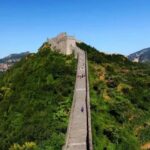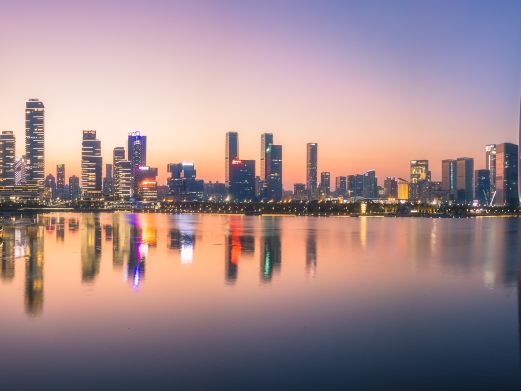Also known as the Jade Pagoda, Sizhou Pagoda is located on the West Hill of Huizhou West Lake and is one of the oldest structures on the lake. Initially constructed during the reign of Emperor Zhongzong of the Tang Dynasty to commemorate the great saint monk Sengjia, it was later referred to as the Great Saint Pagoda by the Northern Song Dynasty literary figure Su Shi, who was exiled to Huizhou. In the 42nd year of the Jiajing era of the Ming Dynasty (1584 AD), the pagoda was destroyed and rebuilt as a pavilion at the beginning of the Wanli era. In the 46th year of the Wanli era (1618 AD), it was reconstructed as a pagoda again. As the bright moon rises and the cool breeze brushes over the lake, creating ripples, the lake’s radiance shimmers, and the Sizhou Pagoda standing on West Hill casts its reflection into the lake, forming the scene known as ‘Jade Pagoda Ripples’, which is highly praised by visitors to West Lake. It is said that during the Longshuo period of the Tang Dynasty, the Western monk Sengjia came to China and later passed away in Chang’an, where Emperor Zhongzong built a pagoda for him in Sizhou. Consequently, pagodas modeled after the Sengjia Pagoda were constructed in various places, hence the name Sizhou Pagoda. When Su Dongpo was exiled to Huizhou during the Song Dynasty, he referred to this pagoda as the Great Saint Pagoda, or Jade Pagoda, with the verse ‘As the mountain releases the moon at the first watch, the Jade Pagoda lies in the gentle ripples’. With the bright moon rising in the east, the evening mist thin and narrow, and a gentle breeze smoothing the waves, the pagoda’s shadow lies within, called ‘Jade Pagoda Ripples’. When the sun sets in the west, the phrase ‘The pagoda’s reflection stretches into the lake, the lake’s light moves with the slanting sun, unaware of the floating stupa’s day, how many times the golden crow descends and soars again’, is known as ‘Wild Goose Pagoda’s Slanting Light’. The pagoda has seven external and thirteen internal levels, made of brick and wood, and is a pavilion-style Buddhist pagoda. In the 43rd year of the Jiajing era (1564 AD), the pagoda was destroyed again, and in the early years of the Wanli era, it was converted into a pavilion, and in the 46th year (1618 AD), it was rebuilt as a pagoda. The hill is covered with lush greenery, with pavilions and corridors arranged and reflected, presenting a beautiful scenery. Climbing the pagoda to look around, the entire panorama of Huizhou is in view. This pagoda has a history of over 360 years since its reconstruction and is one of the oldest existing structures in Huizhou. During the Guangxu period of the Qing Dynasty, the top of the pagoda was struck by lightning, damaging a corner, which was not repaired until 1955. Since then, it has undergone several renovations, with the outer walls being strengthened, the pagoda body being repainted, the top being repaired, and the floors being added, rejuvenating this ancient structure. Climbing the pagoda to enjoy the scenery offers a fresh artistic conception; with each level climbed, the view becomes broader, and the scenery in the east, south, west, and north is different. Climbing to the top, the panoramic view of Huizhou is breathtaking, and ‘Bird’s Eye View of Jade Pagoda’ is indeed a scene of West Lake. The site is open all year round from 08:00 to 21:30; visitors cannot enter the pagoda, only the exterior can be visited.
Sizhou Pagoda
Also known as the Jade Pagoda, Sizhou Pagoda is located on the West Hill of Huizhou West Lake and is[...]









